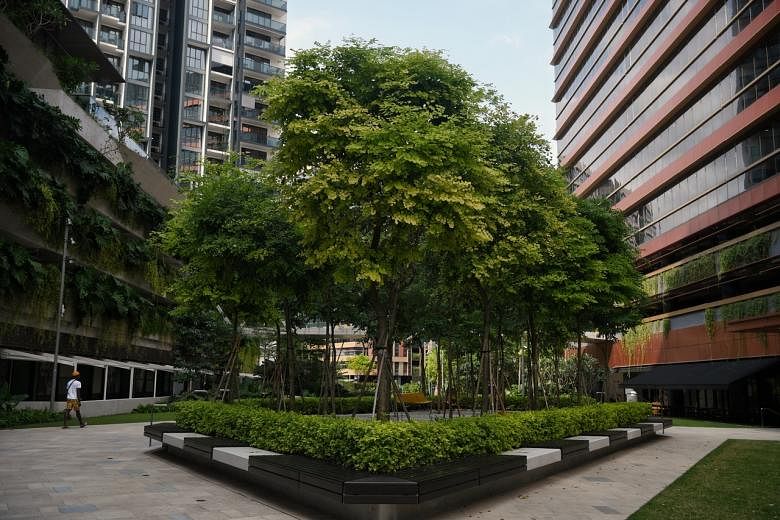SINGAPORE - The Singapore Green Plan 2030 was launched amid much anticipation on Wednesday (Feb 10), following an earlier parliamentary declaration that climate change is a global emergency.
But a closer examination of the targets set out under it has shown that the plan is more or less a compilation of existing sustainability initiatives.
For example, the goal to increase solar energy deployment to at least two gigawatt-peak (GWp) by 2030 had been announced in 2019.
That same year, another 2030 target for Singapore was announced - the "30 by 30" food production goal that aims to see the country cover 30 per cent of its nutritional needs through locally farmed food.
The country's food production goal was also set out in the Green Plan.
Other sustainability measures under the plan, such as extending the lengths of cycling paths or greening roads here, had also been set out in another document detailing national targets.
Called the Sustainable Singapore Blueprint, it was published in 2015 by the Ministry of National Development and the then Ministry of the Environment and Water Resources (now known as the Ministry of Sustainability and the Environment).
However, the latest Green Plan - a 10-year "living plan" spearheaded by five ministries (Education, National Development, Sustainability and the Environment, Trade and Industry, and Transport) - did include some new targets that are worth watching.
One is the aim to enhance environmental sustainability in schools, and get at least 20 per cent of schools here to be carbon-neutral by 2030, with the rest to follow thereafter.
This is significant, as it is in line with global trends. In 2019, more than 7,000 higher and further education institutions worldwide declared a climate emergency and said that they will mobilise more resources to increase sustainability education in their programmes, and go carbon-neutral by 2030, or 2050 at the latest.
Habits are inculcated in the young, so a good place to start nurturing a generation of people aware of their impact on the environment is in the schools.
Another initiative to look out for is the new Enterprise Sustainability Programme.
No details have been made known yet, other than how it aims to help firms here develop "capabilities in sustainability".
But considering this in the context of the other targets under the Green Plan - such as making Jurong Island a "sustainable energy and chemicals park" and developing Singapore into a hub of green finance and carbon services - it sends a signal that sustainability does not necessarily have to come at the expense of the economy.
It shows that there are opportunities to be reaped too in the great green transition - and the Government will help workers and businesses seize them.
But more details about these initiatives will be needed to assess their effectiveness at curbing greenhouse gas emissions.
The multi-ministerial Green Plan also sends a clear signal that sustainability cuts across all sectors - and does not just fall under the purview of ministries that look at environmental or biodiversity issues.
After all, sustainable living does not just impact the environment.
Climate change and its outcomes of extreme weather events and erratic rainfall patterns could severely compromise the status quo - just like Covid-19 did.
Science has shown how the worst consequences of climate change can be avoided. Now, national policies must follow suit.


